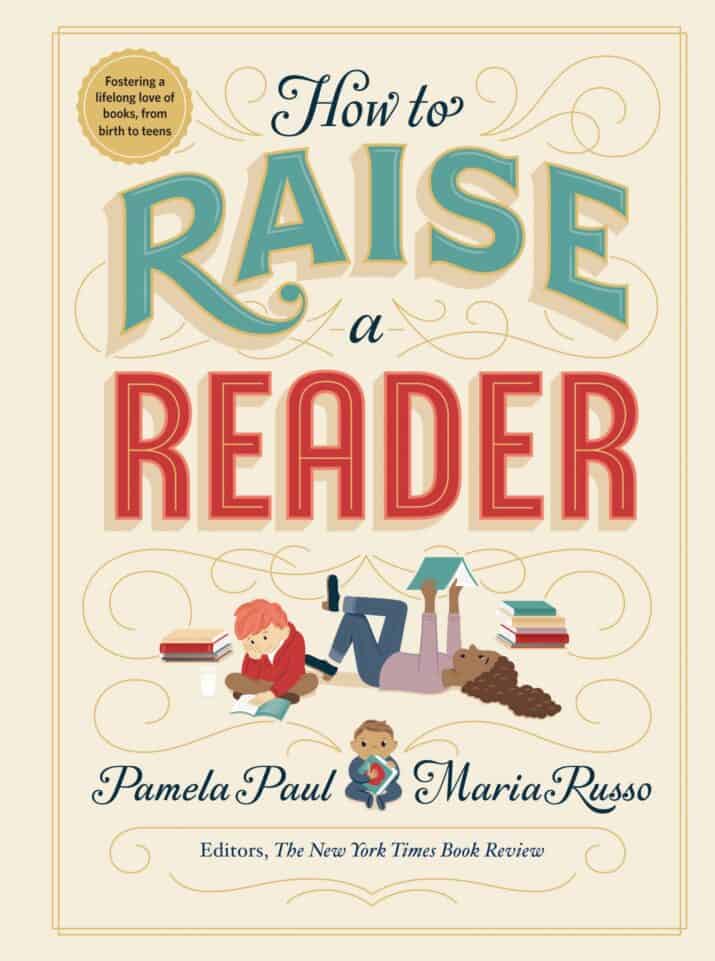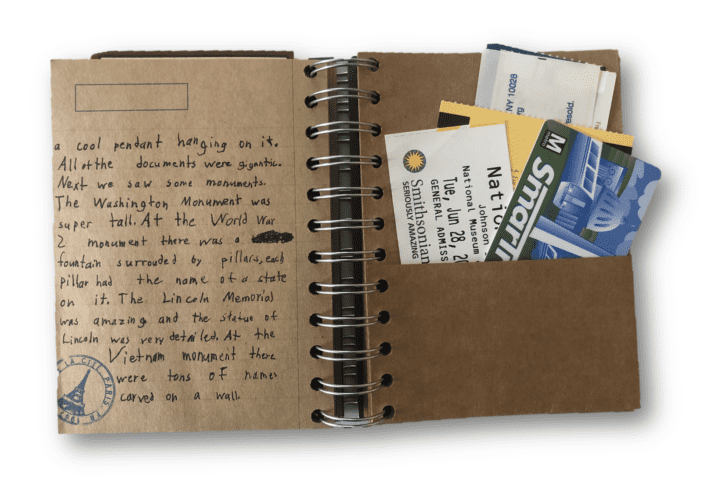written by April Jones Prince
Ten Tips to Encourage Literacy at Home
Reading and writing are superpowers—vehicles for expanding knowledge, for feeling seen and seeing others, for nourishing souls, and for sharing ideas and information across time and space. And they go hand in hand, with strides in one sparking progress in the other.
Cultivating these awesome powers of thought, communication, and understanding is one of the greatest gifts we can give our children.
Each year, kids spend around 900 hours in school vs. 4500 waking hours outside of school. How can we use those hours to help encourage and empower our children to see themselves as the readers and writers they are? Because we are ALL readers and writers—from reading novels, recipes, and game instructions to writing essays, postcards, and thank-you notes.
School teaches our kids how to read and write, but as parents and caregivers, we play an enormous role in fostering a love of literacy and an appreciation for words and ideas.
Here are ten tips to nurture these superpowers at home.
First up, reading!
1. Make print material accessible
As Pamela Paul and Maria Russo remind us in their excellent book How to Raise a Reader, “Reading at home should be beautiful, fun, curiosity-quenching, and inspiring.” Help create a culture of reading and exploration by stashing a variety of engaging books and other reading materials in every room, in the car, at Grandpa’s, etc.
This is relatively easy for many households, but 61% of kids in lower-income families have no books at home. We can donate to organizations like First Book and Reading is Fundamental that help get books into the hands of kids who need them most.
2. Get caught reading!
When and where are you reading? Can your kids see you—and do they know you’re reading, not playing Candy Crush? When we show young people that we prioritize, value, and enjoy reading, we send a powerful message that reading matters. Talk about what you’re reading. As Donalyn Miller shares in her book Reading in the Wild, she created a Reading Graffiti wall in her classroom so students could share favorite lines from books. How about creating a similar wall or bulletin board at home?

3. Never stop reading aloud
Reading aloud grows vocabulary, attention, social-emotional learning, and important connections in the brain. We can also read the same books our kids are reading on their own. Discuss, make connections, ask questions, infer, predict, repeat!
4. Help kids find interesting reading material
Browse the library, used book sales, or a friend’s bookshelf. Consider magazines, graphic novels, cookbooks, or video game guides. Expose your readers to a variety of subjects, formats, and genres, then let kids choose. Almost 90% of 6-17-year-olds say their favorite books are the ones they’ve selected themselves (Scholastic Kids & Family Reading Report 2018).
5. Think outside the book-box
Most of us associate reading with books, but we can think outside the dust jackets and help kids see that books aren’t the only things that make them readers.
Cook or bake and let kids read the recipe. Hand kids the travel guidebook or map. Encourage friends and relatives to mail your kids postcards. Read poems, riddles, tongue-twisters, silly stories, and jokes. Build a reading fort. Read to a pet. Challenge kids to reading BINGO. Listen to audiobooks. There are so many ways to reinforce the power of reading in our daily lives!

All that reading supports writing. As Jim Trelease explained in The Read-Aloud Handbook, the way to get better at writing is to write more. But it’s also, significantly, to READ more: “The more you read, the better you write… It’s tough to write compound, complex, or good old simple sentences if you haven’t seen them that often. And when do you see them most often? When you read—you see them over and over and over.”

Indeed, reading and writing are two sides of the same process, and each complements the other.
When reading with kids, take time to notice the choices authors make. “Wow, that beginning really pulled me in!” “The author chose fascinating facts!” “Isn’t that a juicy word?”
To nurture writing
1. Make writing materials accessible
Just as you leave reading materials everywhere, leave writing supplies out, too. Make it easy for kids to create. And when they do, praise their work and share and/or display their writing prominently. If kids want to make books, you can staple or tie pages together, use a sleeved binder, or have their book printed at sites like Storyjumper.com or Shutterfly.
2. Write together
Let your child take the lead and offer suggestions as needed. “What problem will your story solve?” “What facts do you think are most important and interesting?” It’s OK for younger kids to dictate their words and illustrate them; drawing is a critical stage in early writing. To encourage developing writers, consider writing nonfiction, “fan fiction” about a favorite character, or a fractured fairy tale. A project with an existing structure is often less intimidating!
3. Feed kids’ brains
Go for walks, lift rocks to see what’s underneath, see movies, explore parks and museums, cook and try new foods, play new games. Give kids experiences to write about! We’re not just writers when we sit down with pencil and paper. We are writers all the time as we drink in the world around us.
4. Find an authentic audience
Correspond with a pen pal, write to an author or illustrator, send postcards, keep a travel journal, start a neighborhood newspaper, post book or movie reviews on Bookopolis.com, put on a play or make a movie (both of which need… scripts!). Embrace all kinds of storytelling.

5. Make it fun
Tell a progressive story around the campfire or fire pit, host a poetry slam for family or friends, play Story Cubes, Mad Libs, or other storytelling games, splash Magnetic Poetry across your fridge for impromptu composing.
In this era of division and wonderful diversity, raising readers and writers has never felt so important.
As we encourage, celebrate, and build upon all kinds of reading and writing, we are empowering the next generation of leaders, voters, and parents to embrace the power of words, their own and others’. And that is super indeed.
About April Jones Prince


April Jones Prince (Instagram and Twitter) is the mom of two high school reader/writers and is the author of the double-sided picture book You Are a Reader!/You Are a Writer!. She lives in Massachusetts and is a frequent presenter at schools and libraries. You can find more literacy resources for parents and games for kids at www.apriljonesprince.com.

KEEP READING
Book Recommendations for Kids by Age
Joke Books for Kids
Kids Magazines

 PARENTING TIPS
PARENTING TIPS







 PREGNANCY
PREGNANCY








 BABY CARE
BABY CARE








 TODDLERS
TODDLERS








 TEENS
TEENS








 HEALTH CARE
HEALTH CARE







 ACTIVITIES & CRAFTS
ACTIVITIES & CRAFTS








 CONTACT
CONTACT ABOUT
ABOUT



